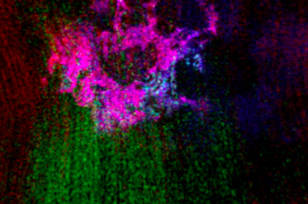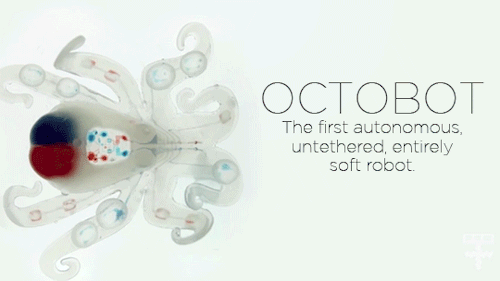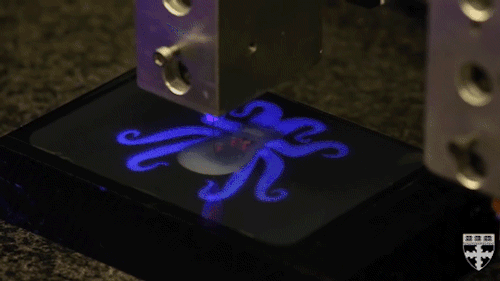Omg Okay So This Is Pretty Interesting But I HAVE SO MANY QUESTIONS . . . I Need To Think More About
omg okay so this is pretty interesting but I HAVE SO MANY QUESTIONS . . . I need to think more about this but I have my . . . doubts XD
@maevemauvaise I can’t vouch for the veracity but this is pretty damn cool.
More Posts from Maevetheeuropan and Others
When Can I Die on Mars?
Elon Musk recently announced SpaceX’s plans to send a spacecraft to the surface of Mars by 2018. It’s never been easier to die on Mars.
By: Fraser Cain. Support Universe Today on Patreon
Solar System: Things to Know This Week
In addition to the Mercury transit of the sun today, there are a few other things you should know about our solar system this week:
1. Mars, Ready for its Close-Up

Mars will soon be closer to Earth than it has been for 11 years, presenting a great opportunity for backyard sky watchers.
2. Fire and Ice

Our spacecraft have an even closer view of Mars, and that fact regularly leads to some intriguing discoveries. The latest: volcanoes may have erupted beneath an ice sheet there billions of years ago. The above image is a mineral map of part of the Martian surface.
3. Icy Hydra

Meanwhile, our New Horizons spacecraft has sent home the first compositional data about Pluto’s four small moons. The new data show the surface of Hydra is dominated by nearly pristine water ice–confirming hints that scientists picked up in images showing Hydra’s highly reflective surface.
4. Ceres, Ever Sharper

The mission director for our Dawn mission writes, “Ceres, which only last year was hardly more than a fuzzy blob against the stars, is now a richly detailed world, and our portrait grows more elaborate every day.”
5. Join us at Jupiter

Our Juno mission arrives at the giant planet on Jul. 4. Meanwhile, all amateur astronomers are invited to take part in a worldwide effort to identify potential observations for the spacecraft to make once it’s in orbit. Find out how to join HERE.
Want to learn more? Read our full list of the 10 things to know this week about the solar system HERE.
Make sure to follow us on Tumblr for your regular dose of space: http://nasa.tumblr.com
Ooooh very cool!
Constellations and the Calendar
Did you recently hear that NASA changed the zodiac signs? Nope, we definitely didn’t…
…Here at NASA, we study astronomy, not astrology. We didn’t change any zodiac signs, we just did the math. Here are the details:
First Things First: Astrology is NOT Astronomy…
Astronomy is the scientific study of everything in outer space. Astronomers and other scientists know that stars many light years away have no effect on the ordinary activities of humans on Earth.
Astrology is something else. It’s not science. No one has shown that astrology can be used to predict the future or describe what people are like based on their birth dates.

Some curious symbols ring the outside of the Star Finder. These symbols stand for some of the constellations in the zodiac. What is the zodiac and what is special about these constellations?

Imagine a straight line drawn from Earth though the sun and out into space way beyond our solar system where the stars are. Then, picture Earth following its orbit around the sun. This imaginary line would rotate, pointing to different stars throughout one complete trip around the sun – or, one year. All the stars that lie close to the imaginary flat disk swept out by this imaginary line are said to be in the zodiac.

The constellations in the zodiac are simply the constellations that this imaginary straight line points to in its year-long journey.
What are Constellations?
A constellation is group of stars like a dot-to-dot puzzle. If you join the dots—stars, that is—and use lots of imagination, the picture would look like an object, animal, or person. For example, Orion is a group of stars that the Greeks thought looked like a giant hunter with a sword attached to his belt. Other than making a pattern in Earth’s sky, these stars may not be related at all.

Even the closest star is almost unimaginably far away. Because they are so far away, the shapes and positions of the constellations in Earth’s sky change very, very slowly. During one human lifetime, they change hardly at all.
A Long History of Looking to the Stars
The Babylonians lived over 3,000 years ago. They divided the zodiac into 12 equal parts – like cutting a pizza into 12 equal slices. They picked 12 constellations in the zodiac, one for each of the 12 “slices.” So, as Earth orbits the sun, the sun would appear to pass through each of the 12 parts of the zodiac. Since the Babylonians already had a 12-month calendar (based on the phases of the moon), each month got a slice of the zodiac all to itself.

But even according to the Babylonians’ own ancient stories, there were 13 constellations in the zodiac. So they picked one, Ophiuchus, to leave out. Even then, some of the chosen 12 didn’t fit neatly into their assigned slice of the pie and crossed over into the next one.

When the Babylonians first invented the 12 signs of zodiac, a birthday between about July 23 and August 22 meant being born under the constellation Leo. Now, 3,000 years later, the sky has shifted because Earth’s axis (North Pole) doesn’t point in quite the same direction.

The constellations are different sizes and shapes, so the sun spends different lengths of time lined up with each one. The line from Earth through the sun points to Virgo for 45 days, but it points to Scorpius for only 7 days. To make a tidy match with their 12-month calendar, the Babylonians ignored the fact that the sun actually moves through 13 constellations, not 12. Then they assigned each of those 12 constellations equal amounts of time.
So, we didn’t change any zodiac signs…we just did the math.
Make sure to follow us on Tumblr for your regular dose of space: http://nasa.tumblr.com
LOL oh @claraxbarton you know me SO well!
I’ve totally got the first ep on my DVR - I just haven’t had time to watch it lol
@maevemauvaise !!!!!!!!!!!!
Okay now that I’m starting to get my ass in gear for astrophotography, I’d love it if some of y’all sated my need for attention and followed my instagram! I will return the favor of course
It’s mostly just space pictures, dogs, me, hiking stuff and lab stuff
Hearing: Next Steps to Mars: Deep Space Habitats
Subcommittee on Space (114th Congress) Next Steps to Mars: Deep Space Habitats

Glittering Frisbee Galaxy: This image from Hubble’s shows a section of a spiral galaxy located about 50 million light-years from Earth. We tend to think of spiral galaxies as massive and roughly circular celestial bodies, so this glittering oval does not immediately appear to fit the visual bill. What’s going on? Imagine a spiral galaxy as a circular frisbee spinning gently in space. When we see it face on, our observations reveal a spectacular amount of detail and structure. However, the galaxy frisbee is very nearly edge-on with respect to Earth, giving it an appearance that is more oval than circular. The spiral arms, which curve out from the galaxy’s dense core, can just about be seen. Although spiral galaxies might appear static with their picturesque shapes frozen in space, this is very far from the truth. The stars in these dramatic spiral configurations are constantly moving as they orbit around the galaxy’s core, with those on the inside making the orbit faster than those sitting further out. This makes the formation and continued existence of a spiral galaxy’s arms something of a cosmic puzzle, because the arms wrapped around the spinning core should become wound tighter and tighter as time goes on - but this is not what we see. This is known as the winding problem. Image credit: ESA/Hubble & NASA For more information on this image, visit: https://go.nasa.gov/2niODGL



Creepy or adorable? Researchers at Harvard University have demonstrated the first autonomous, untethered, entirely soft robot: the octobot.
Instead of being controlled by electronics, the robot’s logic board is powered by chemical reactions and fluid passing along tiny channels. Scientist have struggled to create completely soft robots because rigid components like circuit boards, power sources and electronic controls are difficult to replace.
Learn more about the octobot and soft robotics here and see the full study published in Nature here.
Videos Credit: Harvard SEAS/Image Credit Lori Sanders
omfg I wanna buy this as a poster


Do not go gentle into that good night. Rage, rage against the dying of the light.
-
 maevetheeuropan reblogged this · 8 years ago
maevetheeuropan reblogged this · 8 years ago -
 maevemauvaise liked this · 8 years ago
maevemauvaise liked this · 8 years ago -
 laurathia reblogged this · 8 years ago
laurathia reblogged this · 8 years ago




